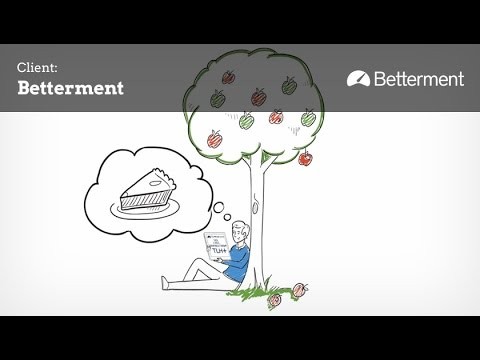Tax Loss Harvesting_3
Post on: 31 Июль, 2015 No Comment

Tax Loss Harvesting In addition to rebalancing, taxable investors should also consider a tax-savings tool called tax loss harvesting.
In addition to rebalancing, taxable investors should also consider a tax-savings tool called tax loss harvesting. A market downturn provides you with an opportunity to examine your specific situation and to identify whether you can save on a future portion of ordinary income (as shown below) and on capital gains taxes that are generated each year due to distributions from your mutual funds, rebalancing of your portfolio, or the sale of funds for your cash needs. Each year taxable accounts will generate some capital gains.
Because of the tax offset value of realized capital losses, investors should consider the following strategy after stock markets have experienced a large enough decline:
1. Sell those equity index funds in your taxable accounts that have declined in value by approximately 10% or more and have a minimum capital loss of about $10,000, based on your average cost basis. For fixed income funds, the percentage criterion can be as low as 1%, depending on the volatility of the fund. This sale will create a realized short term capital loss on the sold funds held for less than 12 months and a long term capital loss on sold funds held more than 12 months.
2. Then immediately invest the proceeds of the sale into a substantially different broad market index fund, such as the S&P 500 for equity funds (if you are not selling the S&P 500). For fixed income, it may be preferable to simply keep the proceeds in money market. Please note that many index funds (especially those without transaction costs) have a minimum holding period requirement. For example, the Schwab S&P 500 funds (SWPPX and ISLCX) carry a 2% redemption fee on shares held less than 30 days. Also, since the exact value of proceeds will not be known until the close of the market, about 85% of the proceeds will be invested the same day and the remaining 15% will be invested subsequently.
3. Purchase the original funds back on or after 31 days from the sale of the original funds. This 31 day period avoids the IRS Wash Sale Rule (see p. 55 of this pdf). The IRS Wash Sale Rule states that a wash sale occurs when you sell or trade stock or securities at a loss and within 30 days before or after the sale you: 1) buy substantially identical stock or securities, 2) acquire substantially identical stock or securities in a fully taxable trade, or 3) acquire a contract or option to buy substantially identical stock or securities. If you sell stock and your spouse or a corporation you control buys substantially identical stock, you also have a wash sale. If you buy the substantially identical stock in your IRA, you also have a wash sale. (more on this subject )
After the 31 days, your portfolio will also be reviewed and traded as needed for the purchase of the sold funds and rebalancing, so that your overall risk exposure will be in approximate alignment with the asset allocation of your original index portfolio. Whenever IFA invests additional cash deposits or sells funds for withdrawals, we review the portfolio for rebalancing needs.
4. Report the realized capital losses to your accountant to offset future capital gains and a portion of your income, reducing future tax bills. A gain/loss report from your custodian and/or IFA will indicate the gains and losses for the tax year. Individuals can use up to $3,000 of capital losses to offset their income ($1,500 for a married person filing separately). If you realized $10,000 in capital losses, a taxpayer would be able to apply $3,000 of their net capital loss to reduce their taxable income by $3,000, leaving $7,000 in unused net capital loss. Unused capital losses can also be carried over until they are used up (see the second-to-last paragraph of this IRS Tax Topic page ). If net long-term capital loss exceeds net short-term capital gain, the excess becomes long-term capital loss in the following year. If net short-term capital loss exceeds net long-term capital gain, the excess becomes short-term capital loss in the following year. The value of these tax offsets will vary with your income, your existence of long or short term capital gains, changes to the tax code and your state of residence. (see US Income Tax/Capital Gains and Losses)
Tax loss harvesting is not market timing. By transferring the money into another index fund or exchange traded fund, such as an S&P 500 index fund or ETF, investors can remain approximately fully invested (the first day is slightly less because we do not know the exact settlement price of the sales) in a broad market index that is not a substantially identical stock or security. Additionally, certain custodians charge no transaction fees when you buy and sell their specified S&P 500 index fund. However, there are transaction fees to be paid to the custodian (Schwab or Fidelity) for the sale and purchase of most mutual funds or ETFs. No additional compensation or fee is paid to the investment advisor (IFA).
Once you have decided to proceed with tax loss harvesting and have agreed to the concept that your risk level will not be changed during the harvest period, the trades do not have to be urgently executed on any particular day. This can be understood by supposing that you did not harvest and the market goes up 2% the next day. If your position had a 12% loss, it would now have a 10% loss which you could still harvest. If, on the other hand, you had harvested the loss at 12%, the new fund that was purchased would now have a gain of 2% which would offset your realized loss. Due to the non-urgency of this particular type of trade, Index Funds Advisors does not promise same-day execution when client approval is received. While tax loss harvesting is a valuable tool, there are some risks associated with it. As such, one should carefully consult with a financial advisor prior to making the decision to tax loss harvest. Examples of such risks include:

1. If you sell funds at a 10% long term capital loss, buy the S&P 500 index fund and it increases by more than 5% during the 31 day interval, the value of a 10% realized long term capital loss could be offset by a 5% realized short term capital gain from the sale of the S&P 500 fund (assuming a 35% tax rate on short-term gains and ordinary income, and 15% on long-term gains, but not considering your additional state tax, if any). There is about a 20% probability of this occurring, based 50 years of monthly S&P 500 data. For this reason we will only sell funds, or combination of funds, that have losses of about 10% or more.
If you have a 10% short term capital loss from your sale, a 10% short term capital gain from the S&P 500 index fund will be required to offset the tax benefit and it is highly unlikely that the S&P 500 will increase by 10% in one month. In fact, over the last 50 years, the S&P 500 index has increased 10% in one month only 1.7% of the time.
2. During the minimum 31 day interval required to keep the loss, the S&P 500 index fund, or other substitute broad market fund, will almost certainly obtain a different return than the funds you sold, because they are different indexes and not substantially identical stocks or securities. This risk is the only reason the IRS allows this loss to be kept by investors. Due to the short interval of 31 days, the difference in value should be small, but there is a risk of it deviating more than 3%, which may be in excess of the tax benefit of the harvested loss, depending on your state residence. The chart below shows the frequency with which various asset classes beat the S&P 500 by 3% or more, based on 50 years of monthly returns. Over the last 50 years ending 2007, Index Portfolio 90’s (an allocation of 11 equity indexes ) average monthly return has been 1.14%, with a standard deviation of 4.01%, while an S&P 500 index fund has averaged 0.95% with a standard deviation of 4.13%. On a purchase of $100,000, you would expect the S&P 500 fund to earn about $190.00 less than Index Portfolio 90 over a 31 day period, with a variance relative to the standard deviation of the monthly returns. However, it would be rare that the variance exceeds $2,400, which is the approximate tax credit value of a $10,000 harvested long term capital loss for a California resident (other states will vary). If that occurs, the tax loss harvesting trades would have been done with no benefit to the investor and possibly at a cost. You should be aware of this risk before you pursue any tax loss harvesting.
3. There are transaction fees to be paid to the custodian (Schwab, TD Ameritrade or Fidelity). No additional fee is paid to the investment advisor (IFA).
Despite the risks mentioned, IFA frequently advises clients to harvest losses under the conditions described above. Of course, your decision to tax loss harvest should be carefully weighed and discussed with your accountant and a qualified fee-only advisor who carries the fiduciary standard to act in your best interest. If you would like to take advantage of IFAs expertise in tax loss harvesting, or simply learn more about whether such action is appropriate for you, please call 888-643-3133 to speak with one of our many qualified investment adviser representatives.
Any tax or legal information provided is a summary of our current understanding and interpretation of the current income tax regulations and is not exhaustive. Investors should consult their tax advisor or legal counsel for advice and information concerning their specific situation. Neither Index Funds Advisors, Inc. nor any of its representatives, may give legal or tax advice.














